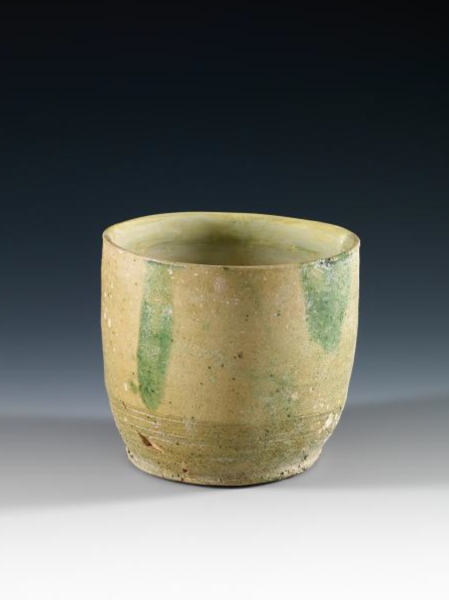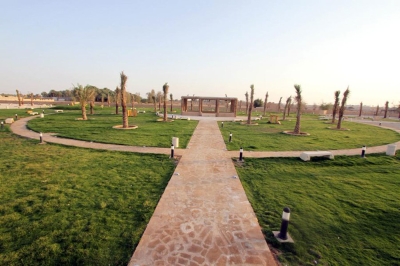
The Ancient Pottery Bowl is a ceramic vessel made from a clay paste mixed with white stone fragments. It was discovered in the historical area of al-Rabatha, an archaeological site rich in various ancient industries, including pottery, ceramics, stonework, glassware, metal tools, jewelry, adornments, inscriptions, writings, and coins. Al-Rabatha is located approximately two hundred km east of al-Madinah al-Munawwarah, on the edge of the western Hejaz Mountains in the Kingdom of Saudi Arabia.
Specifications of the pottery bowl
The ancient pottery bowl has a barrel-shaped form, narrowing slightly in the lower quarter of the body. Its rim is plain, representing an extension of the body wall, and it has a flat circular base. Both the interior and exterior surfaces were smoothed, with ribbing visible on the inner surface. Glazing traces are present on both surfaces. The exterior surface features irregular green lines, while near the base, there are grooved lines that encircle the vessel's body and extend vertically. The bowl was wheel-thrown, oxidized-fired, and exhibits high durability.
Dimensions of the pottery bowl
Height: 13,8 cm.
Base diameter: Thirteen cm.
Rim diameter: 16.7 cm.
Thickness: Seven mm.
History of the pottery bowl
This pottery bowl dates back to the Abbasid era during the Islamic period and was used for storing liquids.
Its discovery is part of the archaeological survey and excavation efforts carried out by the antiquities and museums sector in Saudi Arabia over the past years. It is among the finds made by Saudi archaeologists, scientific missions, and joint research teams.
The pottery bowl at the Louvre Museum
The bowl is preserved at the National Museum in Riyadh, registered under the number 2317, and was selected to be part of the Saudi Archeological Masterpieces Through the Ages Exhibition, held at the Louvre Museum in Paris, France, in 2010. The exhibition featured three hundred original artifacts from different historical periods and materials, originating from various regions of Saudi Arabia. These artifacts were classified into three chronological groups: prehistoric artifacts, pre-Islamic artifacts, and Islamic artifacts. The bowl was later showcased in several exhibitions worldwide, including in Europe, Asia, and America.
Significance of the bowl
This pottery bowl, made using the fast-wheel technique, is one of the notable examples of pottery belonging to the spotted-glaze pottery style, characterized by striping, streaking, and splattering beneath a colorless transparent glaze. This type of pottery was first known to be used in the ninth century.
Related quizzes
Related articles

